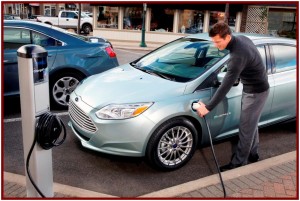Call it the curse of the California Air Resources Board, whose members to this day think it can mandate market demand even after the spectacular failure of its first EV mandate that cost automakers billions.
Call it political folly at its pandering worst by seeking a green image via a promise that, if fulfilled, will force expensive, impractical vehicles on citizens costing them lots of greenbacks.
Call it a farsighted pledge to save the planet from the most invasive species ever – mankind, one whose time might be limited.
Whatever you call it, eight states, representing 27% of the total U.S. new vehicle market, have announced a joint plan to put 3.3 million allegedly zero-emission electric vehicles on America’s roads by 2025. “Alleged” because EVs are elsewhere emissions vehicles when you take into account how the electricity is generated.
The agreement, an insipidly named Memorandum of Understanding was signed by the governors of California, Connecticut, Maryland, Massachusetts, New York, Oregon, Rhode Island and Vermont who claim they will support zero-emission EVs in those states through a number of actions. (Zero-emission vehicles include battery electric vehicles, plug-in hybrid electric vehicles, and hydrogen fuel-cell-electric vehicles. These technologies can be used in passenger cars, trucks, and transit buses.)
Some of the highlights from a press release from Rhode Island are:
- Harmonize building codes to make it easier to construct new electric vehicle charging stations
- Lead by example by including EVs in their public fleets
- Evaluate and establish, and where “appropriate, financial and other incentives to promote EVs”
- Consider establishing favorable electricity rates for home charging systems
- Develop common standards for roadway signs and charging networks.
The eight states claim they will develop an “action plan” over the next six months that will include these and other strategies for EVs.
“Reducing barriers to electric vehicle ownership, through efforts like those described above, will help keep the market for electric vehicles growing. California has been leading the charge so to speak when it comes to coordinating efforts to support the roll out of electric and hydrogen fueled vehicles through inter-agency coordination, consumer incentives, and infrastructure support — including the development of its own action plan last year, says Don Anair of the Union of Concerned Scientists.
Anair just gushes about such raids on taxpayers’ wallets from incentives for vehicle ownership, such as HOV access and purchase rebates, among other marketplace interventions. These subsidies for the rich have put California in the lead in electric vehicle adoption, with the state currently accounting for about 29% of sales.
“The commitment by seven other states to take similar measures is great news for expanding consumer access to electric vehicles, and reducing barriers to ownership, across the country,” claims Anair.
In the U.S. 140,000 plug-in vehicles have been sold in the last 3 years in a total vehicle market above 50 million. Anair claims these vehicles are cutting gasoline consumption by about 40 million gallons per year, cutting carbon emissions, and saving the wealthy some money at the pump, at unstated costs to the rest of us. Moreover, he does not mention the U.S. imported 8.5 million barrels of oil a day in 2012. That’s 55 gallons a barrel before refining or about 467 million gallons a day, not year.
While EV use is admirable or at least benign in the overall scheme of things in AutoInformed’s view, it is bad public policy to force them on the market with special incentives for the wealthy. It’s really egregious, if taxpayers don’t get to vote on such incentives.


